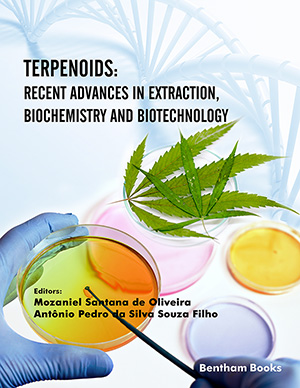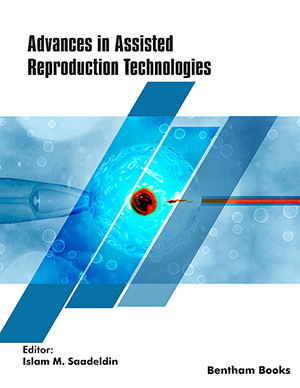
Abstract
Background: The nasal fibroblast secretome, which includes various cytokines, chemokines, and growth factors, promotes cell migration. Currently, the proteomics of Airway Fibroblast (AF) Conditioned Medium (AFCM) are being actively studied.
Objective: This study was aimed at profiling and identifying the AF secreted proteins that can enhance wound healing of the airway epithelium and predict the potential pathway involved.
Methods: Airway Epithelial Cells (AECs) and AFs were isolated from redundant human nasal turbinate and cultured. AFCM was collected by culturing the AFs either with serum-free airway epithelium basal medium (AECM) or with serum-free F12:DMEM (FDCM). For evaluating cell migration, the AECs were supplemented with airway epithelium medium and defined keratinocyte medium (1:1; AEDK; control), or with AEDK supplemented with 20% AECM or 20% FDCM. The mass spectrometry sample was prepared by protein precipitation, followed by gel electrophoresis and in-gel digestion.
Results: AECM promoted better cell migration compared to the FDCM and the control medium. Bioinformatics analysis identified a total of 121, and 92 proteins from AECM and FDCM, respectively: 109 and 82 were identified as secreted proteins, respectively. STRING® analysis predicted that 23 proteins from the AECM and 16 proteins from the FDCM are involved in wound healing.
Conclusion: Conditioned medium promotes wound healing by enhancing cell migration, and we successfully identified various secretory proteins in a conditioned medium that play important roles in wound healing.
Keywords: Secretome, conditioned medium, cell migration, wound healing, fibroblasts, proteomics, airway epithelium.
[http://dx.doi.org/10.1016/j.tiv.2018.07.020] [PMID: 30076938]
[http://dx.doi.org/10.1038/srep46239] [PMID: 28447619]
[http://dx.doi.org/10.1186/s12938-017-0415-y] [PMID: 29096634]
[http://dx.doi.org/10.1186/s13613-017-0331-0] [PMID: 29098448]
[http://dx.doi.org/10.1371/journal.pone.0107818] [PMID: 25233096]
[http://dx.doi.org/10.1007/s00011-018-1191-2] [PMID: 30306206]
[http://dx.doi.org/10.1046/j.1365-2222.2000.00095.x] [PMID: 10849473]
[http://dx.doi.org/10.1513/pats.200601-006AW] [PMID: 16799088]
[http://dx.doi.org/10.1038/srep45666] [PMID: 28361885]
[http://dx.doi.org/10.1155/2006/901417] [PMID: 16983448]
[http://dx.doi.org/10.3390/ijms21020480] [PMID: 31940884]
[http://dx.doi.org/10.1016/j.otc.2016.08.011] [PMID: 27888909]
[http://dx.doi.org/10.1007/s12070-014-0766-7] [PMID: 26405668]
[http://dx.doi.org/10.1038/mi.2015.63] [PMID: 26174765]
[http://dx.doi.org/10.12968/jowc.2013.22.8.407] [PMID: 23924840]
[http://dx.doi.org/10.1242/dev.152587] [PMID: 29138288]
[http://dx.doi.org/10.3389/fphar.2014.00123] [PMID: 24904424]
[http://dx.doi.org/10.1186/s12931-015-0185-7] [PMID: 25849331]
[http://dx.doi.org/10.1007/s10930-018-9800-z] [PMID: 30343346]
[http://dx.doi.org/10.17576/jsm-2020-4902-22]
[http://dx.doi.org/10.3389/fncel.2016.00070]
[http://dx.doi.org/10.1016/B978-0-323-24145-8.00003-X]
[http://dx.doi.org/10.1152/ajplung.00261.2018] [PMID: 30070589]
[http://dx.doi.org/10.1016/j.ymthe.2017.09.023] [PMID: 29066165]
[http://dx.doi.org/10.1371/journal.pone.0148846] [PMID: 26863621]
[http://dx.doi.org/10.21873/cgp.20023] [PMID: 28387650]
[http://dx.doi.org/10.1371/journal.pone.0129033] [PMID: 26083627]
[http://dx.doi.org/10.1007/s10384-012-0165-0] [PMID: 22855020]
[http://dx.doi.org/10.1007/s00441-012-1364-1] [PMID: 22427060]
[http://dx.doi.org/10.1038/s41598-017-03701-0] [PMID: 28623309]
[http://dx.doi.org/10.1371/journal.pone.0151338] [PMID: 26978651]
[http://dx.doi.org/10.3390/polym13040508] [PMID: 33567703]
[http://dx.doi.org/10.1371/journal.pone.0121249] [PMID: 25830234]
[http://dx.doi.org/10.1016/j.phrs.2019.04.021] [PMID: 31048033]
[http://dx.doi.org/10.1590/S0102-86502014000200009] [PMID: 24604317]
[http://dx.doi.org/10.3892/mmr.2019.10606] [PMID: 31485628]
[http://dx.doi.org/10.1007/s00404-015-3844-5] [PMID: 26275380]
[http://dx.doi.org/10.1038/s41598-019-39650-z] [PMID: 30816242]
[http://dx.doi.org/10.1073/pnas.1913707117]
[http://dx.doi.org/10.1016/j.actbio.2015.08.050] [PMID: 26327439]
[http://dx.doi.org/10.1016/j.addr.2015.11.001] [PMID: 26562801]
[http://dx.doi.org/10.5772/intechopen.75728]
[http://dx.doi.org/10.1038/nrm3904] [PMID: 25415508]
[http://dx.doi.org/10.1038/s41598-017-12919-x] [PMID: 29042658]
[http://dx.doi.org/10.1152/ajplung.00087.2019] [PMID: 31774302]
[http://dx.doi.org/10.4161/org.6.4.12555] [PMID: 21220961]
[http://dx.doi.org/10.1007/s40139-016-0099-1] [PMID: 27171595]
[http://dx.doi.org/10.1038/s41598-017-03614-y]
[http://dx.doi.org/10.1186/s13287-019-1236-7]
[http://dx.doi.org/10.1016/j.bioactmat.2020.06.015] [PMID: 32671290]
[http://dx.doi.org/10.1016/j.jcws.2010.12.003] [PMID: 24527149]
[http://dx.doi.org/10.1186/s12938-019-0647-0] [PMID: 30885217]
[http://dx.doi.org/10.1186/s12866-019-1682-5] [PMID: 31888471]
[http://dx.doi.org/10.1016/B978-0-12-809847-9.00001-5]
[http://dx.doi.org/10.1016/B978-0-12-809847-9.00003-9]
[http://dx.doi.org/10.1016/B978-0-12-817068-7.00004-5]
[PMID: 6383060]
[http://dx.doi.org/10.1016/j.jprot.2020.103721] [PMID: 32109607]
[http://dx.doi.org/10.1080/14789450.2017.1388167] [PMID: 28974114]
[http://dx.doi.org/10.1016/bs.apha.2017.06.001]
[http://dx.doi.org/10.3892/ijmm.2018.3512] [PMID: 29484384]
[http://dx.doi.org/10.1371/journal.pone.0174899] [PMID: 28380006]
[http://dx.doi.org/10.1042/BSR20170658] [PMID: 28864782]



























